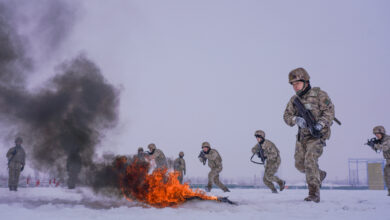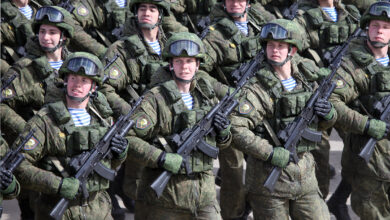Russia has shipped away an S-300 surface-to-air missile system deployed in Syria to the Black Sea, multiple media organizations have reported, citing satellite imagery and other sources.
The system’s battery’s garrison near Masyaf, Syria, was found empty on August 19, The Drive reported, citing images released by private intelligence firm ImageSat Intl.
The outlet added that battery vehicles were seen parked near the Russian naval base in Tartus “with the cargo ship Sparta II waiting across the harbor.”
Russia “gifted” the battery to Syrian President Bashar Al-Assad in 2018 to protect “critical” targets while retaining the rights over the system.
Private Israeli intelligence firm @ImageSatIntl publishes satellite images showing that Russia has apparently moved its S-300 system out of Syria back to Russia. pic.twitter.com/pYDbtT1gaz
— Emanuel (Mannie) Fabian (@manniefabian) August 26, 2022
Battery Approaching Crimea
The Sparta — a US-sanctioned vessel known to transport military cargo — left Tartus on August 20 and crossed the Bosporus Strait, Turkey, overnight on August 24-25.
It then anchored at the Russian port of Novorossiysk in the Black Sea on the 27th, Naval News wrote, citing a video posted on Twitter by ship observer Yörük Işık.
Novorossiysk is a major Russian naval port around 100 miles (161 kilometers) from Crimea.
.@USTreasury designated [UKRAINE-EO13685], @mod_russia owned Oboronlogistika's, civilian crewed Russian flag roro Sparta II transited Bosphorus towards Med en route from #Tartus #Syria to Novorossiysk carrying military cargo. @egetulca pic.twitter.com/fsGlSfz4i8
— Yörük Işık (@YorukIsik) August 27, 2022
Could Be Deployed Against Land Targets
The Drive observed that the S-300 battery could be deployed either in Crimea or near Russia’s border with Ukraine.
The system has been proven ineffective against M31 GMLRS rockets, the Ukrainian HIMARS’ primary munition. However, the system is likely to have a greater impact on fixed and rotary-wing aircraft.
The system can also be used for guided missile strikes against Ukrainian ground targets as the Russian armed forces are running low on Kalibr cruise missiles and Iskander ballistic missiles, according to Ukrainian military intelligence estimates.












